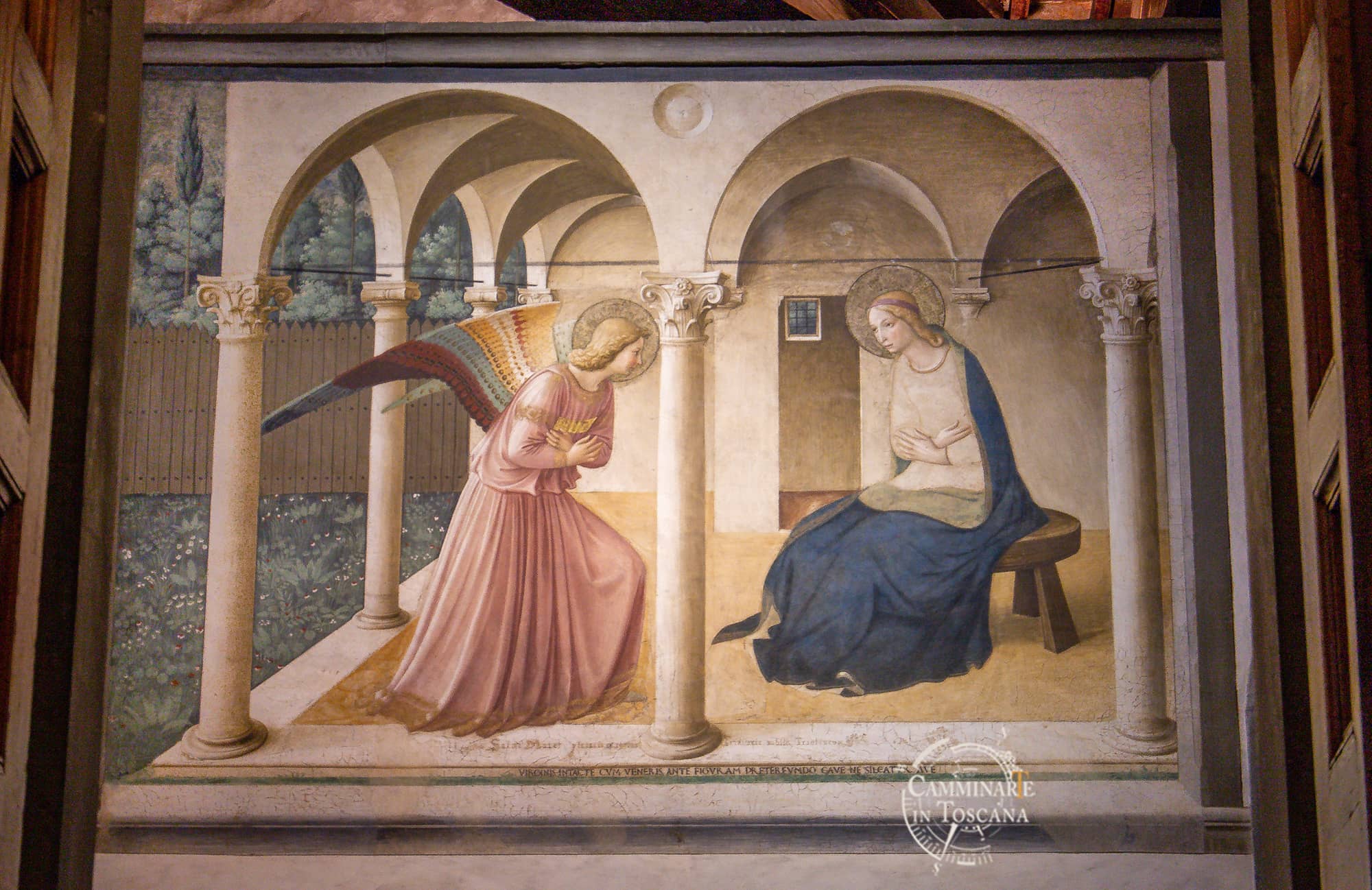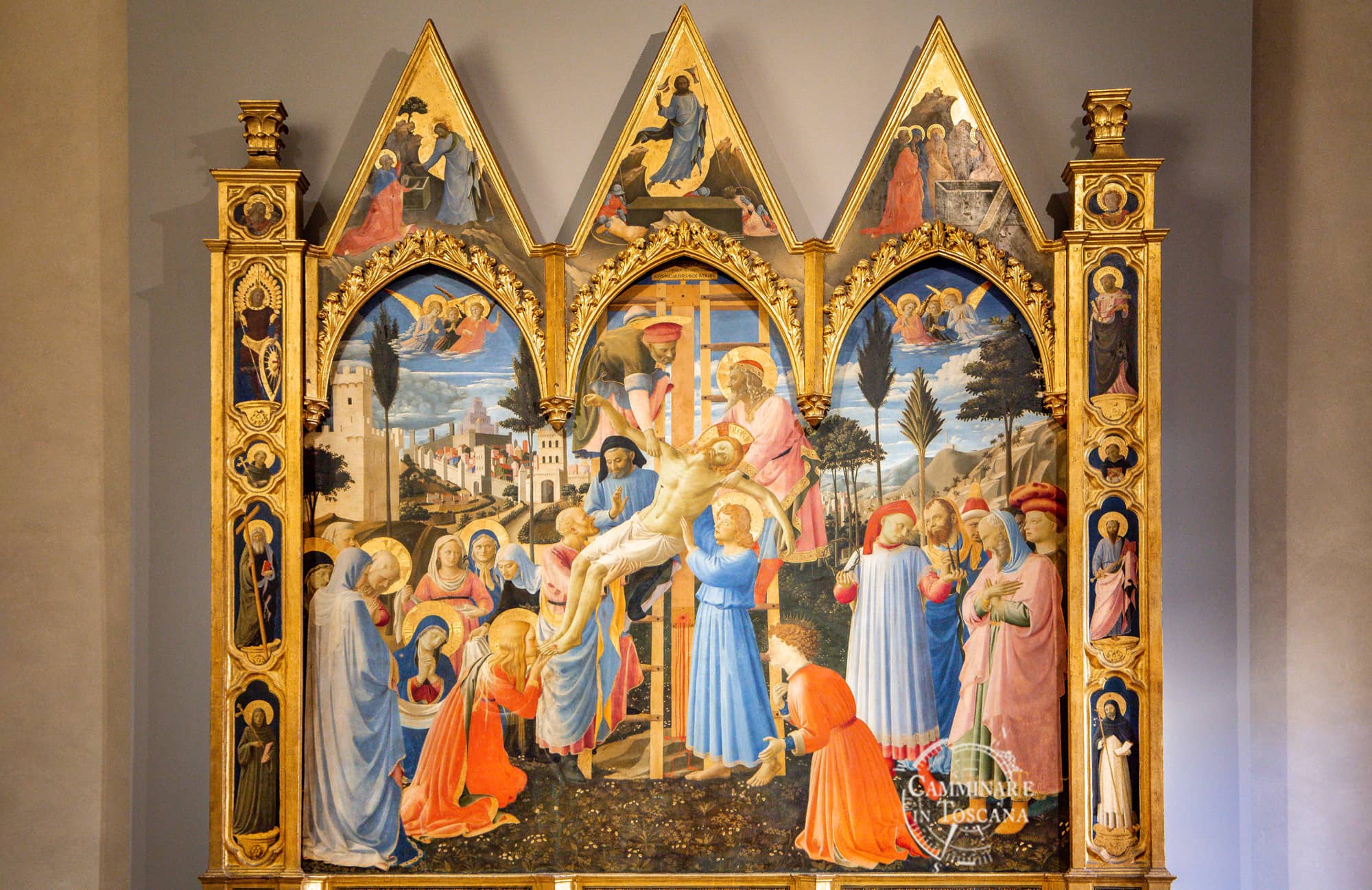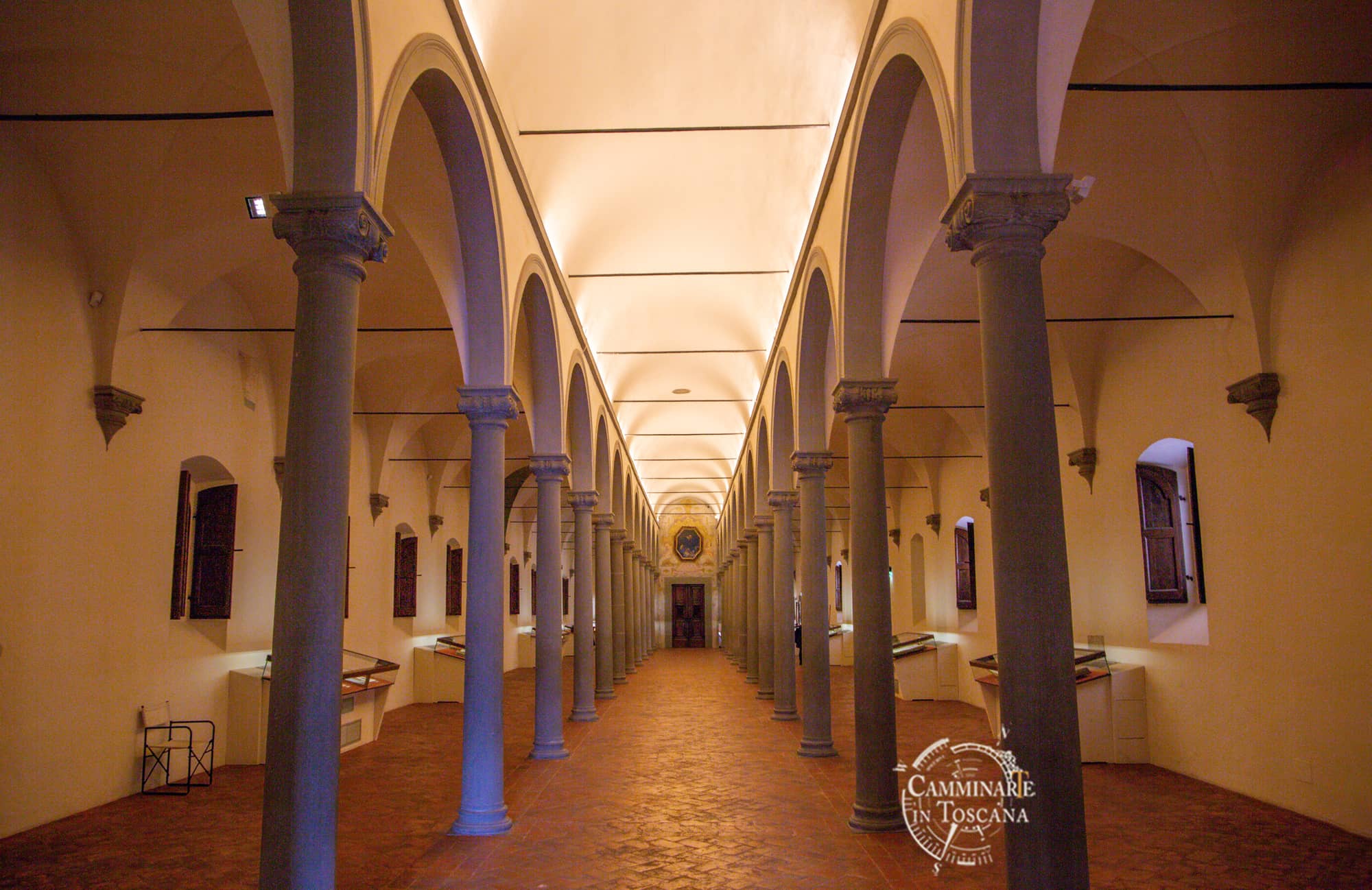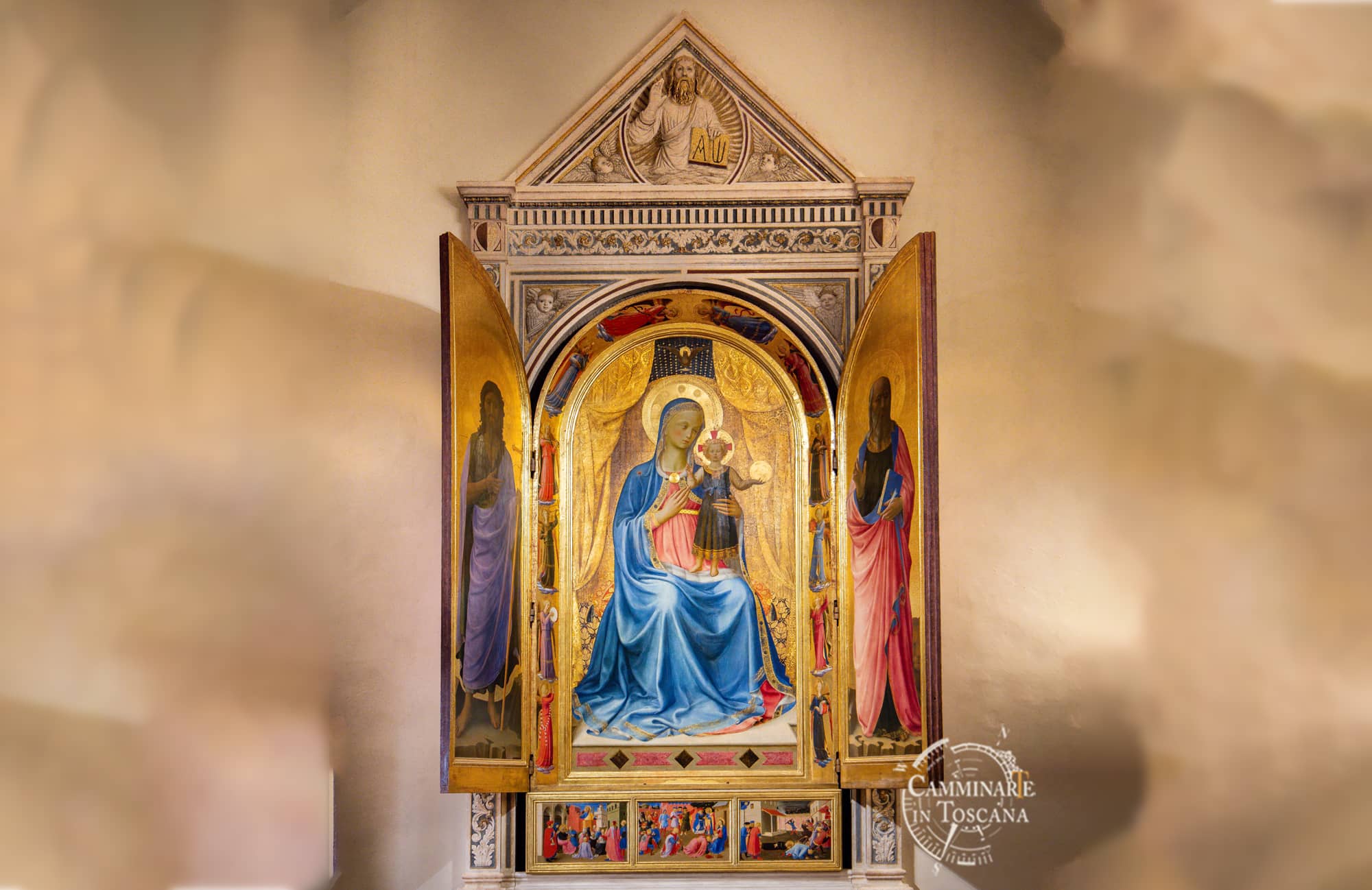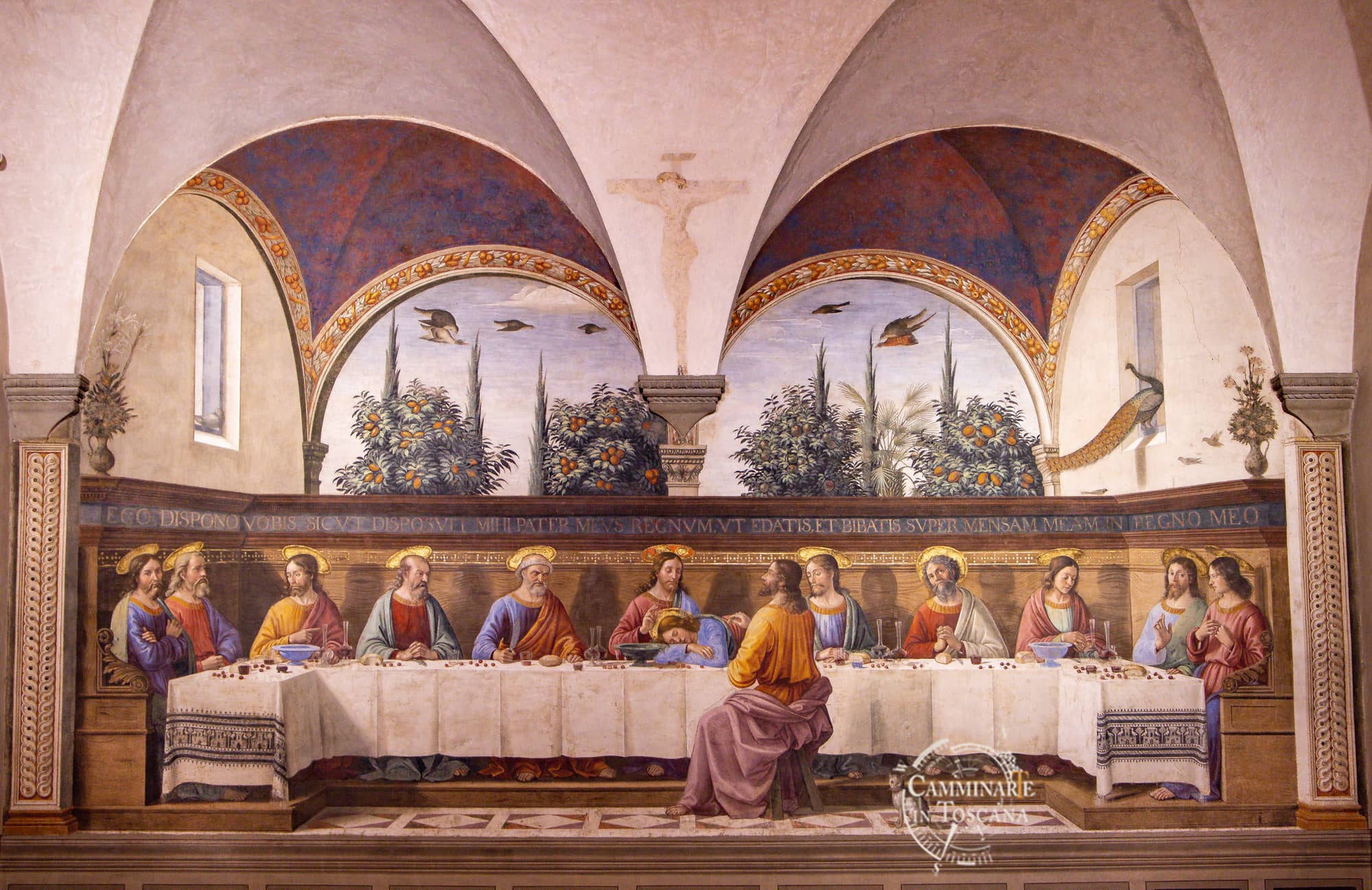The visit to the Museo of San Marco in Florence, the guardian place of the painting of Beato Angelico
Museo di San Marco in Florence guided tour is a journey into the delicate colours of early fifteenth-century painting of which Fra’ Giovanni da Fiesole, better known as Beato Angelico, was among the most illustrious exponents together with Masaccio, Paolo Uccello and Gentile from Fabriano.
Thanks to the numerous works preserved in this ancient convent, made by the Dominican friar who lived there, you will be able to admire figures and scenes still imbued with Gothic suggestions, immersed in warm and diaphanous atmospheres that will fully restore the cultural dimension experienced in these environments at the time of Angelico, under the impulse of Cosimo de’ Medici, known as “il Vecchio”, the most important patron of the ancient convent in the middle of the century.
But the Museum of San Marco is a place that also reflects the historical dynamics of the Florence of the time: within its walls, preserved in their almost entirety, lived one of the most charismatic and controversial characters: Girolamo Savonarola. Therefore, in addition to admiring the many works by Angelico, a visit to the convent will allow us to retrace the turbulent events that marked the city’s politics – and beyond – at the end of the fifteenth century.
The Cloister of San Marco, the rediscovered intimate dimension
We begin the Museo di San Marco in Florence guided tour from the cloister, a fascinating space where you are struck by the sudden silence that envelops you after having just crossed the threshold of the ticket office, leaving behind you the hustle and bustle of the square which is continually crossed by vehicles motor.
Here you will find a dimension of intimacy and recollection that is rarely appreciated in other Florentine contexts, today taken by storm by hordes of visitors often only hunting for fetishes to photograph and post on social networks.
The first image you will find in front of you is the Crucifixion frescoed by Beato Angelico with San Domenico; the lunettes with seventeenth-century frescoes illustrate the life of a prestigious member of the congregation: Sant’Antonino Pierozzi, one of the most prominent figures in the charitable missions of Florence and prior of the Dominicans of San Marco during the re-foundation of the monastery.
The most important gallery of paintings dedicated to Beato Angelico
After visiting the cloister, we will continue inside the hospice room, a space where today the lights and colours of Fra Angelico’s paintings shine, making it the most important gallery in the world of the artist: from the Strozzi Deposition to the Pala di San Marco, passing through the Altarpiece of San Pietro Martire, the evocative atmospheres of the artist are an evocation of feelings and moods that arouse a sense of relief and meditation in your journey through Florentine art. We will admire the Tabernacle of the Linaioli, one of Angelico’s supreme creations and among the masterpieces of the entire history of art, in which the late-Gothic legacy and Masaccio’s innovations find here one of the happiest synthesis.
The “Piagnona”
Entering the Sala Capitolare, in which the monumental fresco of the Crucifixion is still preserved, also by Beato Angelico, we will also be able to see an important historical testimony of the story of the followers of Savonarola: a bell, still known by the curious name of “Piagnona ” (the weeping bell), received particular treatment on the occasion of the arrest of the Dominican friar in April 1498.
Still on the subject of the piagnona, you will be surprised by the curiosities about its sound properties which, despite various sufferings, the bell still retains.
The visit of the cells and the Library of San Marco
It will be time to go upstairs, where, making a turn to the last ramp, you will suddenly find yourself in front of one of the most famous frescoes of Renaissance art…
We will access one of the most evocative spaces of the whole series of Florentine monastic experiences that is still admirable: the library. Still today marked by 3 naves divided by slender stone columns – as if it were a church -, the library houses an interesting section of illuminated books, some of precious workmanship and unparalleled beauty.
In the small didactic section we will go to see which particular materials were used to make and decorate the books.
The cell of Cosimo the Elder
If the friars’ cells – each with a fresco that had a specific purpose – are a common presence in convents, you will be surprised to find the cell that was instead intended for Cosimo the Elder, a member of the Medici. Why did the most illustrious member of the Florentine family, regularly married and with children, have his own cell inside the convent?
The Rooms of Savonarola
Continuing our Museo di San Marco in Florence guided tour, we reach the rooms where Girolamo Savonarola stayed, the great preacher friar from Ferrara who was prior of San Marco at the end of the fifteenth century. We will retrace the events that saw the arrest and accusation of heresy by Pope Alexander VI in 1498.
Ghirlandaio’s exotic Last Supper
If with the friar’s cell – the last one on the first floor – the visit will seem to you to be over, you will be surprised once again when, moving towards the exit, there will still be room to discover another masterpiece of painting: the Last Supper by Domenico Ghirlandaio. Belonging to the series of 4 cenacles that the Florentine painter created in various complexes, this version is one of the most luxuriant and exotic due to the presence of animals such as the peacock: it will be surprising to discover that the animals and objects present have their own particular symbology.
After having crossed the gate that takes you to the exit, you will be able to understand how a Museo di San Marco in Florence guided tour will leave you with sweet and elegant images, together with a kaleidoscope of mystical suggestions that this complex has preserved and that it is still able to transmit to those who cross its threshold.

